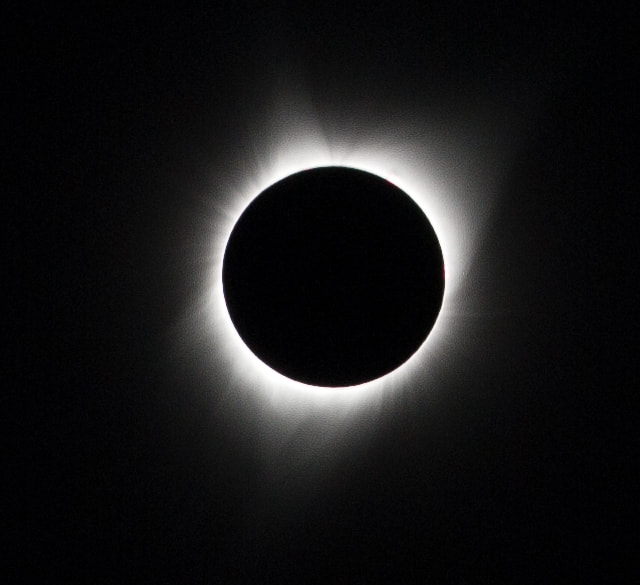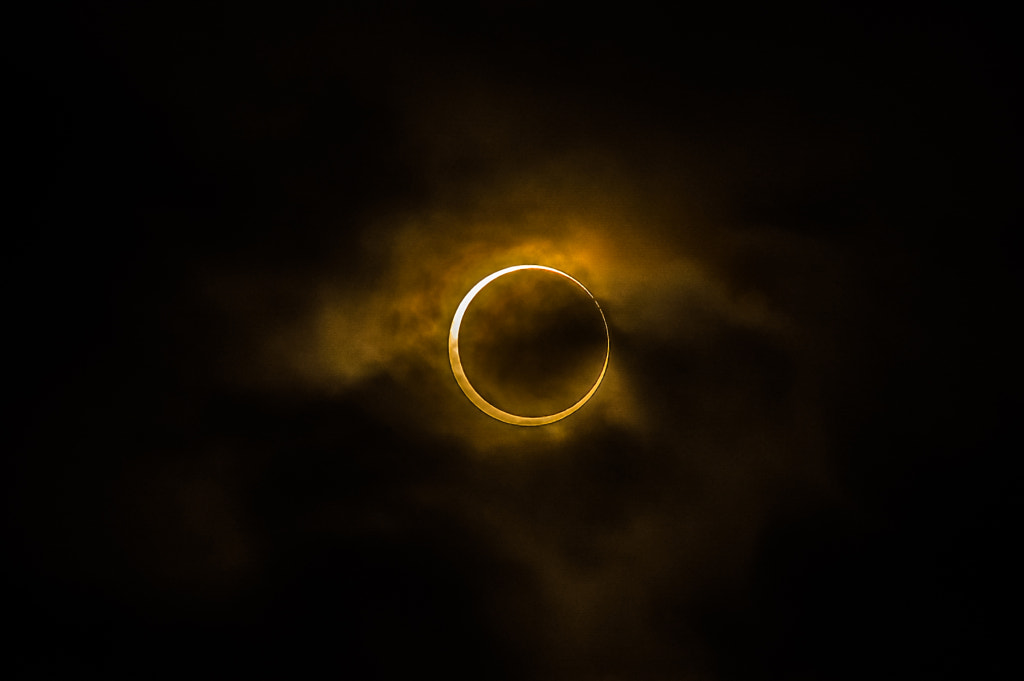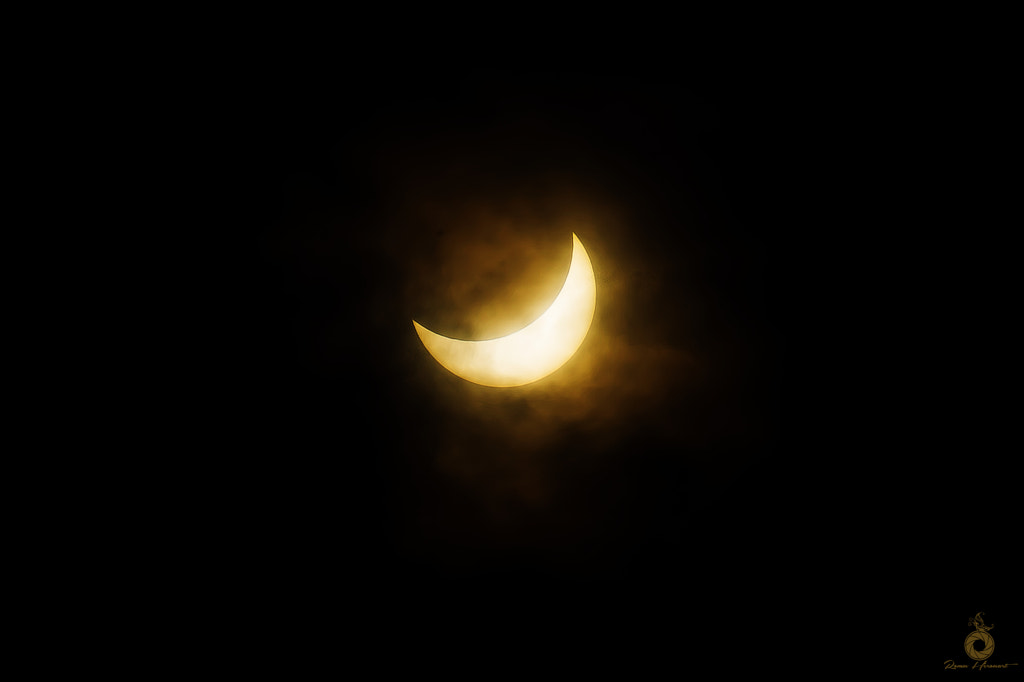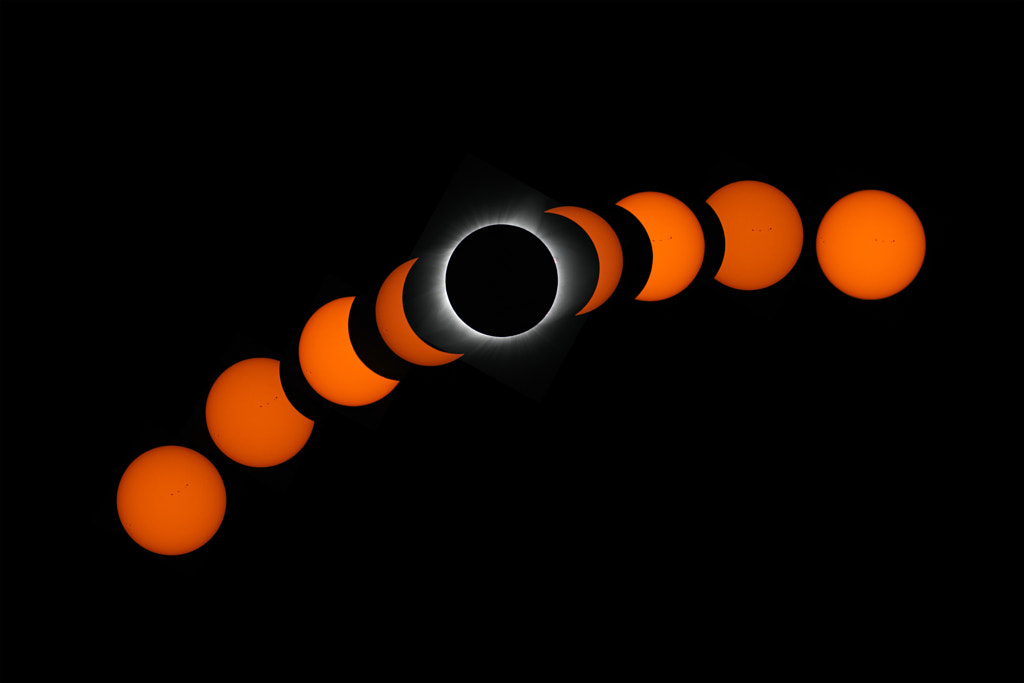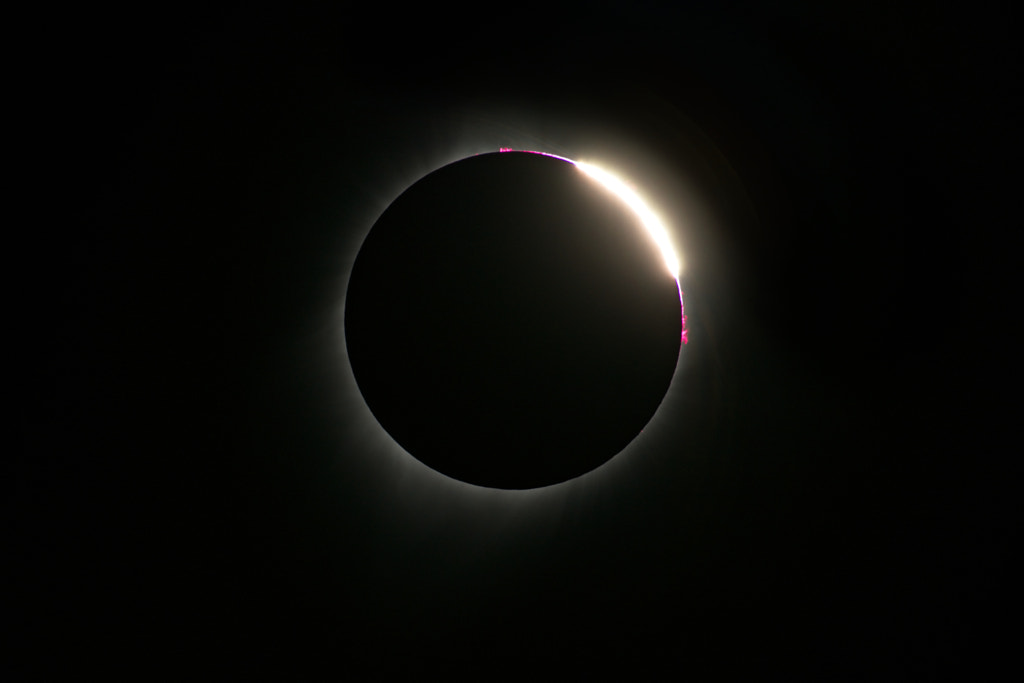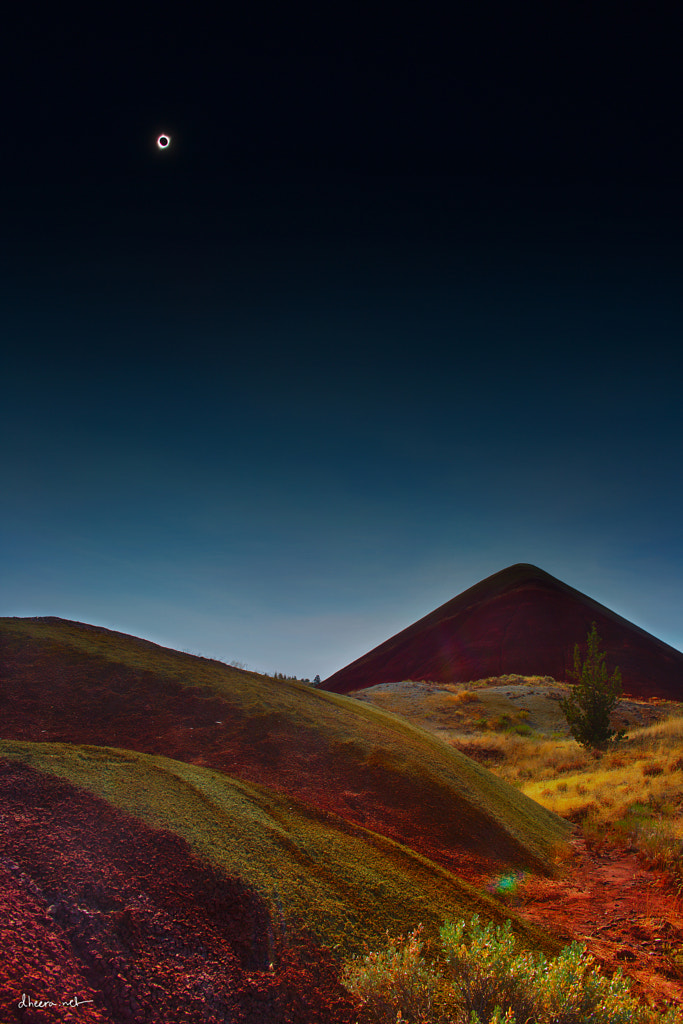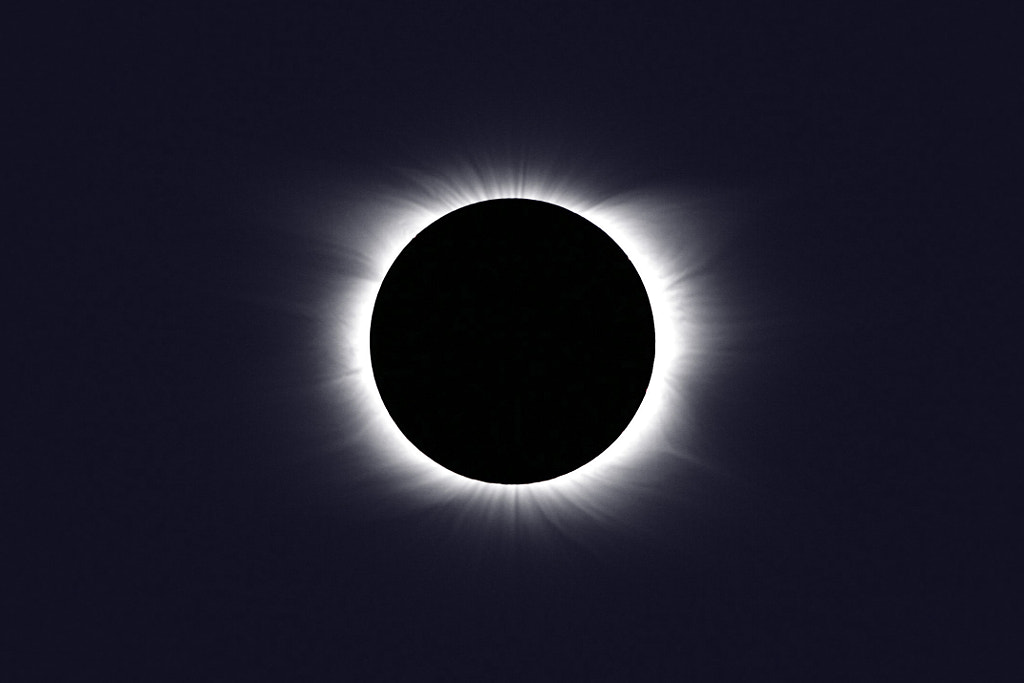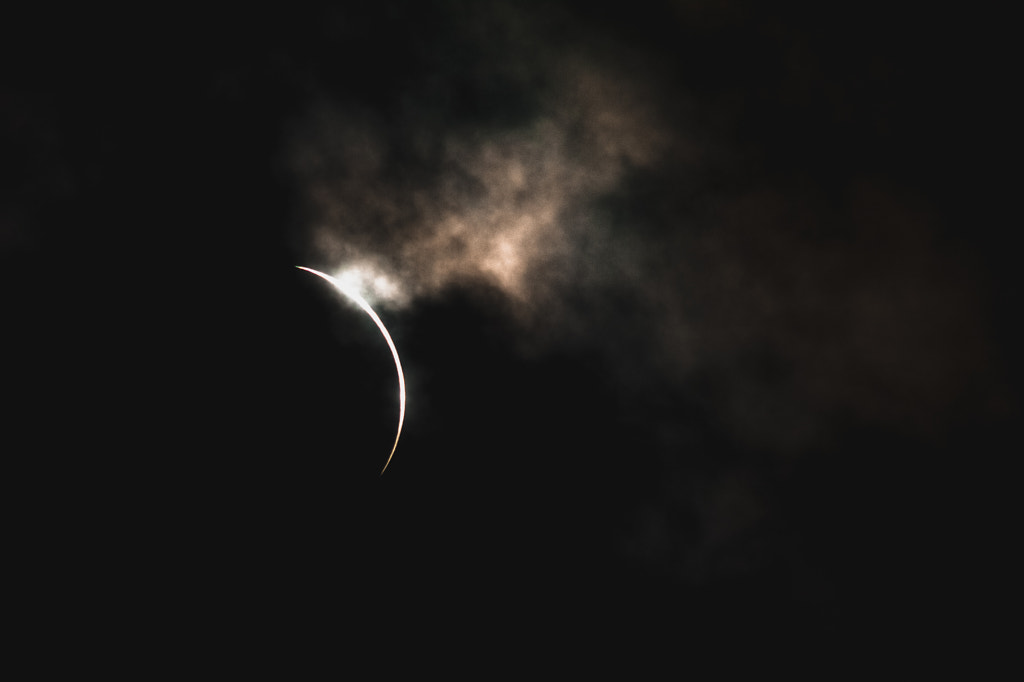Photo voltaic eclipse images | The important information for photographers

On July 18, 1860, when the British astronomer Warren De la Rue got down to {photograph} the overall photo voltaic eclipse at Rivabellosa, Spain, he introduced with him a whole lot of kilos of kit, together with 113 kilos of engineer’s and carpenter’s instruments; 139 kilos of water; lamps, lamp-oils, and wine weighing in at round 73 kilos; a small range; and a kettle.
De la Rue additionally arrange a darkroom laboratory on-site, and in line with the astronomer and anthropologist Anthony Aveni, he in the end got here residence with forty glass negatives, taken over three minutes of totality. They have been the primary to image the solar’s corona encircling the moon.
157 years later, an estimated 4.4 million folks tuned into NASA’s dwell tv protection of the photo voltaic eclipse that befell over elements of North America. It was not solely the most-viewed but additionally the most-photographed eclipse in historical past.
Immediately, it’s simpler than ever to {photograph} the heavens, and De la Rue’s historic forty photos of totality have been joined by numerous others. Nonetheless, all fashionable photographers carry with them the identical sense of awe and surprise that that astronomer felt greater than a century in the past, and fortunately, they don’t want to hold a whole lot of kilos of kit or arrange their very own darkroom to seize unforgettable photographs.
Listed here are our high suggestions for photographing photo voltaic eclipses.
Know your eclipses
A photo voltaic eclipse occurs when the moon strikes between the Earth and the solar. A complete photo voltaic eclipse, just like the one in elements of North America in August of 2017 or the one in Chile and Argentina in July of 2019, solely happens when the moon seems to fully “block out” the solar, plunging viewers into darkness and revealing the solar’s pearly “corona.”
If you happen to’re outdoors of the trail of totality, you may nonetheless see a partial eclipse; the moon will go in entrance of the solar, but it surely received’t cowl it completely. Whole and partial eclipses occur when the moon’s orbit is near Earth, making it seem bigger than the solar.
Annular eclipses, alternatively, happen when the moon is nearer to the farthest level on its orbit, making it seem smaller. On this case, a fiery ring of daylight will seem within the sky when the eclipse reaches its most level. Lastly, a uncommon hybrid eclipse options each an annular and whole eclipse, with one shifting into the opposite based mostly on the curvature of the Earth.
Understanding the varied varieties of photo voltaic eclipses—and their phases—will type the muse of any photoshoot you’ve got deliberate. Preserve an eye fixed out for these “iconic” pictures which can be distinctive to the particular eclipse you’re viewing, whether or not it’s the faint white corona or the ring of fireside.
Get photo voltaic filter
You’ll want good, high-quality solar glasses to view any photo voltaic eclipse; in any other case, you danger completely damaging your eyes. Simply as you want eclipse glasses to forestall hurt to your self, your digicam wants safety from the solar as nicely. Thousand Oaks Optical makes some nice glass photo voltaic filters, as does Baader Planetarium.
Preserve each your glasses and photo voltaic filter on for all of the partial phases on your security and the protection of your digicam. Even in case you’re carrying your glasses, it’s unsafe to have a look at the solar via the viewfinder of an unfiltered digicam.
If you happen to’re taking pictures a complete photo voltaic eclipse, you should take away the filter when it reaches totality after which change it as soon as the overall section is over. The precise second when the solar is 100% blocked can be the solely time you’ll have the ability to glimpse the eclipse with the bare eye, but it surely lasts for just some instants, so watch out and bear in mind to avert your eyes as quickly because it’s over (you possibly can set a timer for this).
Discover “your” digicam
You may {photograph} a photo voltaic eclipse with virtually any digicam, relying on the look you need. If you happen to’re taking pictures landscapes or folks with the solar within the background, even your cell phone can work, although we advocate putting in a plug-in or app that permits you to shoot RAW information.
Don’t neglect your glasses, and use a further pair to guard your cellphone digicam. The solar will look small in these photographs, so if you need it to look greater, you’ll want to connect your cellphone to a telescope; zooming will simply end in grainy images.
A easy point-and-shoot may also get some good photographs of the partial phases when used along side a telescope with a photo voltaic filter and wide-field eyepiece (right here, you’d use your LCD display screen to compose your shot). And naturally, a DSLR is all the time supreme in case you have the price range for it, particularly since you possibly can check out totally different lenses to get the angle you need.
A large-angle lens (just like the one in your cellphone) will work for environmental pictures with a faraway solar, however if you wish to get near the solar, your greatest guess is utilizing a super-telephoto lens (400mm minimal)—or attaching your digicam to a telescope. That’s the place you’ll get these detailed photographs of Baily’s beads, or the diamond ring impact, which occurs when daylight hits the rugged floor of the moon. If you happen to use a super-telephoto, spend money on a tracker so you possibly can observe the trail of the solar.
Nonetheless, you don’t must shell out a ton of cash for a elaborate digicam; it’s way more vital to have a stable and acquainted digicam that nicely. Go searching till you discover a digicam with a measurement and form you want; do not forget that you’ll must be fast in adjusting your settings and eradicating and changing your photo voltaic filter.
Scout your location
Location is all the things with regards to photo voltaic eclipse images, so select your spot correctly. If you happen to plan to seize a complete eclipse, use an app like PhotoPills to pinpoint the “centerline,” or the precise spot on the map the place totality will final the longest. Some photographers spend months searching for the proper location via satellite tv for pc photographs.
Many photo voltaic eclipse images simply characteristic the solar itself, however together with the panorama can have a dramatic impact, particularly if it’s a distant space. If you happen to plan on taking a shot that includes the panorama, that’s all the time one thing to keep in mind; discover a spot the place the foreground will complement the eclipse, not obscure it.
Spend a while at your location, and be sure to know the way it’ll look on the day of the shoot. You’ll want as a lot open house as potential to maneuver round and guarantee there aren’t any distractions in your body. If it will likely be crowded, plan to reach early so you will get all the things arrange in the very best spot potential.
Follow, observe, observe
In the case of photo voltaic eclipse images, you solely have one likelihood to get it proper, so it’s greatest to get any errors and mishaps out of the way in which earlier than the day of the shoot. PhotoPills has detailed data and a calendar of upcoming eclipses so you possibly can monitor precisely when the eclipse will happen in your location, proper right down to the second.
Upon getting that data, time your self as you do a number of test-runs. Ideally, these “rehearsals” ought to happen on a day when the climate forecast is just like the precise circumstances you’ll expertise on the day of the eclipse, and naturally, they need to happen on the similar time, so the solar is on the similar elevation. You should use Clear Sky Chart a day or two earlier than the shoot for detailed data.
Bear in mind to carry a stable tripod and shutter launch with you in your take a look at days to forestall blurring, and provides your self time to observe eradicating and changing your photo voltaic filter. Check out a number of totally different exposures, and mess around with focusing manually (it’ll be too darkish to make use of autofocus throughout totality).
If you get residence, check out every picture and see what works and what doesn’t. If potential, spend a number of weeks photographing each the solar and the moon in order that it’s second-nature as soon as the time comes.
Bracket your exposures
Typically, you’ll have to bracket a number of exposures to get a crisp, clear shot of an eclipse—particularly throughout totality, because the gentle will change quickly. Be sure you get sufficient pictures at totally different exposures as a way to refine them later in put up, and verify your histogram commonly.
Benefit from the present
Warren De la Rue, the British astronomer who captured the primary images of the corona, went residence with one remorse. He wrote, “I nicely do not forget that I needed I had not encumbered myself with equipment, and I mentally registered a vow, that, if a future alternative ever offered itself for my viewing of a complete eclipse, I might hand over all thought of creating astronomical observations, and dedicate myself to the complete enjoyment of the spectacle which might solely be obtained by the mere gazer.”
This sentiment is one which’s recurred all through the many years; images is vital, however bear in mind to take a while to benefit from the eclipse expertise for your self, with out worrying concerning the digicam. You won’t get one other likelihood to watch the phenomenon.
Play with composition
Some single pictures of photo voltaic eclipses make use of the rule of thirds, a stable composition approach for highly effective photographs—however the choices are limitless right here.
For instance, most of the viral eclipse images we see as of late aren’t only a single body; as a substitute, they seize the totally different phases via a collection of composited photographs. For these montages, you’ll want tripod, as your digicam might want to stay mounted in the identical spot so that every one the phases are aligned.
So long as you make clear that it’s a composite, you will get as inventive as you need with composition right here; one of the most popular eclipse photos in latest historical past, created by Nationwide Geographic photographer Ken Geiger, is an illustration of the eclipse phases over Grand Teton Nationwide Park in Wyoming. By together with fascinating foreground parts, you possibly can present a way of scale and spotlight the vastness of the sky.
You may additionally like these articles:
Everything A Beginner Needs To Know About Astrophotography
Northern Lights Photography | The Essential Guide of Beginners
How To Create A Stunning Holden Hour and Night Cityscapes
5 Videos to Watch Before Photographing The Eclipse
Not on 500px but? Sign up here to discover extra impactful images.
